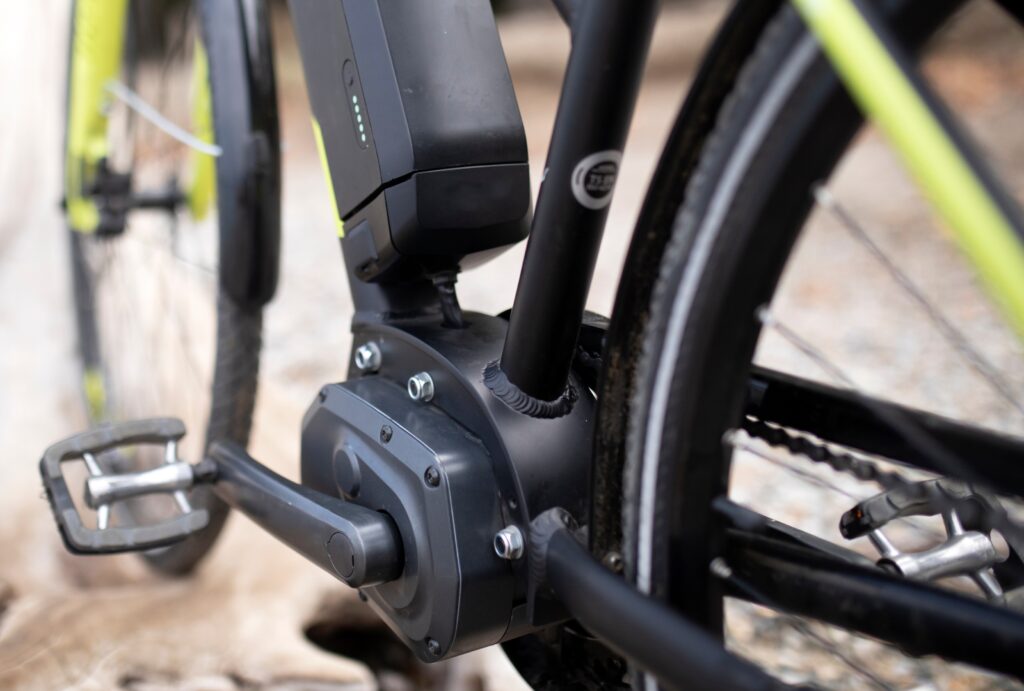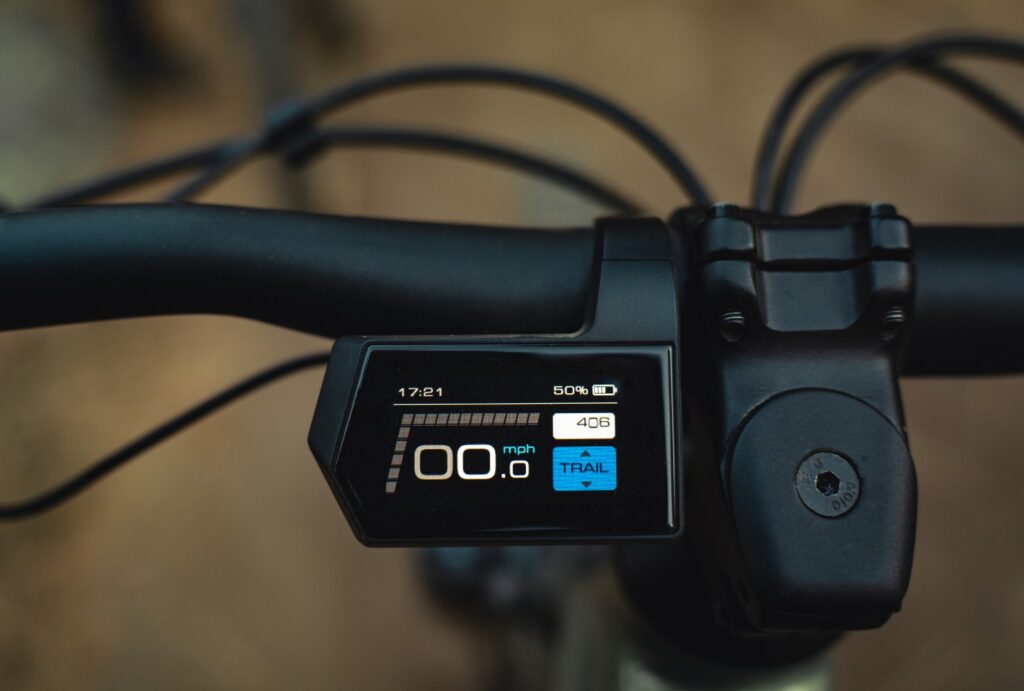You’ve finally purchased your first electric bike and (probably) read the owner’s manual cover to cover. That means you’ve absorbed plenty of information about finding the pedal assist on the bike’s display and setting it to the right level.
But do you know how the pedal assist works or how to use it to get the most out of your ride? If the answer is no, or even a maybe, don’t worry.
Below, we cover everything you need to know about pedal assist levels and how — or, perhaps more importantly, when — to use them. Let’s go!
What Is a Pedal Assist System?
Pedal assist is just what it sounds like: the electrical system on an e-bike that makes pedaling more manageable and helps you go faster with less effort. And yes, every e-bike has a pedal assist system (PAS).
Each PAS has varying levels of assistance you can control using the bike’s display, which typically sits on the handlebars. As you increase these levels of assist, you increase the power and push the motor supplies, and ultimately, the faster you go.
While pedal assist is available on all types of e-bikes, from electric mountain bikes to casual beach cruisers, not every PAS is identical. But, no matter how many levels of assistance the bike has or what those levels are called, their purpose remains the same: to propel the e-bike forward.
That is all you need to remember — pedal assist helps make pedaling easier.
Pedal Assist Levels Versus Traditional Bike

Pedal assist levels have quite a bit in common with the traditional bike gear system, and the two can actually work in tandem.
The gear system on a traditional bicycle helps change the resistance level to match your pedaling intensity preference. For example, when faced with a large hill, an easier gear provides less resistance and easier pedaling. When cycling on flat roads or downhill, a harder gear yields more resistance but higher speeds. Zoom!
Similarly, pedal assist systems make it easier to pedal, but instead of changing gears, the system supplies more power from the battery to the motor. Employing the same example from above, when climbing a large hill on an e-bike, a higher level of assistance makes that mountain feel like a molehill.
Now, gears and PAS aren’t mutually exclusive. Many e-bikes — often eMTBs — include both gears and pedal assist levels.
When riding an electric bike with gears, you simply find a gear and pedal assist level that feels comfortable for you. On flats, you might opt for a middle gear and a lower level of assist, preserving your battery and extending your range. If you’re climbing a long hill, you might opt for a lighter gear and a higher pedal assist level to keep your legs from burning out.
The combinations are limitless — and truthfully, that’s the beauty of electric bikes!
Pedal Assist Versus Throttle
Both a throttle and pedal assist are mechanisms that drive e-bikes. However, a throttle differs from a PAS because it propels the bike with a twist of the wrist or press of a thumb — no pedaling required.
The throttle is on an e-bike’s grip or handlebar and, when twisted or pushed, activates the motor to provide an immediate boost, regardless of whether the rider is pedaling. The experience is akin to riding a motorcycle and eats up more battery than pedal assist.
It’s also important to note that all e-bikes feature pedal assist, but by definition, only Class 2 e-bikes (and, technically, some out-of-class models) have a throttle.
How Motor Sensors Affect Pedal Assist Levels
Electric bikes use a sensor, usually a cadence or torque sensor, to decide when to activate the motor. Each setup offers a distinct way of delivering power, ultimately affecting the use and feel of pedal assist levels.

Cadence Sensors
With cadence sensors, there’s almost a direct correlation between the pedal assist level and the maximum speed for that level. Like a light switch, a cadence sensor kicks the motor on as soon as you start pedaling and off the moment you stop, often with a noticeable jolt.
Because the motor accelerates using a constant power level — determined by the selected pedal assist level — you often get to a point where your legs aren’t affecting the forward progress of the bike. Your legs spin fast with little to no resistance from the drivetrain, an experience commonly referred to as overpedaling.
Pro Tip: Prevent overpedaling by shifting into harder gears as you increase your pedal assist level. Start at a lower level of assist and work your way up until you reach a comfortable balance of leg power and motor.
Pedaling with a cadence sensor in the highest level of pedal assist provides an immediate boost of power, so your top speed hits 20 mph quickly (28 mph for Class 3 e-bikes). There’s minimal effort needed on your part, and it’s a very different experience than riding with a torque sensor.
Torque Sensors
Like with cadence sensors, pedal assist levels still dictate the motor’s maximum power output — just not at a constant level. You don’t set the pedal assist level to reach a certain speed but rather to receive a certain amount of leg power amplification.
In other words, a higher pedal assist level results in a larger magnification of power per pedal stroke. Think of it as adding more muscle to your legs every time you up the assist level.
There’s usually more leg work required (pun intended) to get the bike moving with a torque sensor. The sensor tells the motor to supply power when you put in the work, so reaching top speeds of 20 or 28 mph demands some work from your legs.
Pedal Assist Levels Explained
A PAS offers several levels of assistance, often labeled one to five. However, some systems may have only three or even up to seven levels. Others may provide different names for the levels, like ‘Eco’, ‘Touring’, ‘Turbo’, and ‘Boost’.




No matter the name or number of options, selecting the right level of pedal assist depends on things like cycling proficiency, preferred riding style, any added cargo, and the terrain. In the breakdown below, we examine a PAS with five levels of assistance.
Level 0
At Level 0, you don’t gain any mechanical boost. The motor doesn’t provide any assistance, and the bike feels like a traditional bicycle. Riding without pedal assist allows you to save the battery for when you need it most — maybe that long hill coming up.
Levels 1 and 2
Level 1 offers a slight push to your ride, but for heavier e-bikes, there may not be a noticeable difference between Levels 0 and 1. Usually, Level 2 is where riders start to feel the pedals move more easily. These lower levels aid slightly and are ideal for flat, smooth roadways.
Levels 3 and 4
Upping the pedal assist level a couple of notches provides more power for more challenging parts of the ride. Levels 3 and 4 are best suited for climbing hills and carrying heavy cargo (or even a small child). At these levels of assistance, you feel the motor doing most of the work, dramatically reducing stress on your legs.
Levels 5
The highest pedal assist levels are best reserved for demanding climbs or stretches of road where you need to hit high speeds. You should consider using Level 5 sparingly because it can quickly drain the battery. Balance its use with the other pedal assist levels, and your ride will be a breeze.
Benefits of Using Pedal Assist Levels

The PAS is a defining feature of electric bikes, without which an e-bike would be…just a bike. These varying pedal assist levels (and e-bikes in general) aid riders in numerous ways. Here are a few of the perks.
Greater Ride Enjoyment
The thought of a particularly long bike ride can bum some riders out, but pedal assist helps quell that dread. Pedal assist lowers the barrier of entry for beginners by making riding more accessible, less challenging, and ultimately more approachable.
It also enables older riders to keep up with the youngsters or get them back into riding. And, for experienced riders, it gives them the boost they need to tackle more demanding routes or extend their riding beyond previous physical limitations.
Easier Commutes
Few things are worse than arriving at work hot and sweaty after a strenuous bike commute. Pedal assist dismisses these office space offensives by supercharging the commute so riders travel faster with less effort. Reduced effort means fewer sweat stains and strange looks — and a cheaper dry cleaning bill.
Simpler Hill Climbs
Daunting hill climbs and steep grades are among riders’ biggest challenges. Pedal assist provides the boost needed to make light work of that strenuous climb. Go ahead and summit that mountaintop over there; you can do it — with some pedal assist!
Safer Exercise for Seniors
We conducted a 2023 survey that showed just how much of a game-changer electric bikes can be for older adults. E-bikes offer a safe way to exercise outdoors while expanding their independence and functionality. In fact, we found that adults over 60 were the most likely to use an e-bike for increased mobility — so just know that you’re never too old to ride!
Increased Mobility
Using an e-bike for increased mobility isn’t just for older riders. Many people suffer from chronic joint pain or other mobility restrictions that limit their range of motion and their ability to push hard with their legs — and an e-bike can help address these limitations and get people back in the saddle.
The pedal assist system amplifies the rider’s leg input, taking pressure off joints and sore muscles so that bike riding becomes possible again.
Reach New Riding Heights With Pedal Assist
The PAS is an essential part of electric bikes, and because of it, we can achieve so much more — get to work faster, tackle harder climbs, and recover from injuries so we can get back out there and ride. Without the PAS, we’d just be riding bikes.
Hopefully, you now understand how PAS works and how you can utilize the pedal assist levels to make your rides longer, less physically taxing, and ultimately more enjoyable. The next step is to get in the saddle and try out the different PAS levels for yourself.
Ensure you’re on top of all the latest news across the e-bike world by subscribing to our newsletter.



